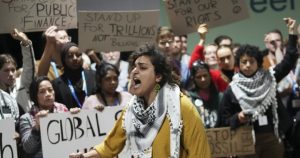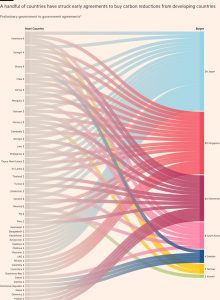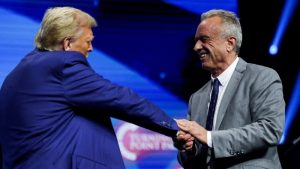Euro falls to 2-month low as investors price in interest rate cuts
Unlock the Editor’s Digest for free
Roula Khalaf, Editor of the FT, selects her favourite stories in this weekly newsletter.
The euro has fallen to a two-month low in the run-up to this week’s crunch meeting of the European Central Bank, due to the prospect of faster interest rate cuts and uncertainty around the looming US presidential election.
The single currency is down more than 2 per cent so far this month to around $1.09, its worst month since September last year.
The fall is being driven by weaker economic data out of the Eurozone, which has raised expectations that the ECB will be more aggressive in cutting rates, according to George Saravelos, global head of FX research at Deutsche Bank.
That has come just as stronger data in the US prompts bets that the Federal Reserve will now move more slowly than previously expected in easing policy, and has boosted the relative attractiveness of dollar assets.
“Looking ahead, we expect further euro weakness helped by a further repricing of Fed and ECB terminal rates [the level at which they stop cutting], given [their] relative growth and inflation trajectories,” he said.
He added that a possible trade war after the US election next month could push the euro closer to parity with the dollar.

Swap markets imply investors are highly confident that the ECB will opt for a quarter-point cut this week to 3.25 per cent, and another quarter-point reduction at its next meeting in December, after a slowdown in inflation in recent weeks raised expectations that it would act more quickly.
The single currency had been “remarkably resilient” this year despite challenges for big European economies, said Jane Foley, head of FX strategy at Rabobank.
But while Eurozone services inflation at around 4 per cent could be stopping the ECB cutting rates faster, should there be “a slide in that number or alternatively should we see ECB members becoming increasingly dovish in their outlook . . . that could be the trigger for the euro to lose its resilience”, said Foley.
Hedge funds still hold more bets on the euro rising than it falling, according to Commodity Futures Trading Commission data as of Tuesday last week.
Some investors believe a second Donald Trump presidency will be strong for the dollar, regardless of his calls for it to weaken, because of his pledge for sweeping tariffs on imports.
“If you have [vice-president Kamala] Harris, it is largely status quo,” said Nicola Mai, economist at asset manager Pimco. “If you have a Trump administration, I think there could be quite a different protectionist approach,” which would “likely be strong for the dollar”.
Traders pointed to the importance of a shift in US interest rate expectations to the euro’s slide, and said developments in the US would be crucial.
“It seems that the US economy is once again defying gravity,” said Athanasios Vamvakidis, global head of G10 FX strategy at Bank of America.
He believe there is more weakness to come in the dollar as the Fed eases rates, but “how much really depends on how soft the US [economic] landing is going to be”.
Others said the market’s expectations of ECB rate-cutting could lay the groundwork for a rally in the euro, if policymakers then signal on Thursday that they will not ease policy as much as anticipated.
#Euro #falls #2month #investors #price #interest #rate #cuts




